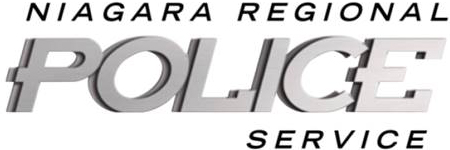

| What is 9-1-1? |
|
For emergency assistance, dial 9-1-1 on your telephone. An operator will answer your call and request which service is required. You will then be connected to either the police, fire or ambulance service in your area. Please stay on the line until told to hang up. Let the operator control the conversation and answer all questions as best you can. In emergency situations, help is on the way as you are giving the information. Niagara 9-1-1 and the Emergency Services of Niagara are pleased to announce the delivery of Text with 9-1-1 (T9-1-1) service in the Niagara Region. T9-1-1 technology enables Communications operator to communicate with members of the DHHSI (Deaf, hard of hearing or speech impaired) Community by text messaging. T9-1-1 can be used whenever a Police, Fire Department, Niagara EMS or Niagara Parks Police response is required. To be eligible to use this service the cell phone must be;
In order to use the T9-1-1 service, registered users must place a conventional voice call to 9-1-1. The call from a registered cell phone is flagged to the emergency operator, prompting them to initiate a text chat with the registered device. Note that NO cell phone can initiate a text messaging session with a 9-1-1 centre. Unsolicited text messages sent to the number 9-1-1 are not delivered. The open call alongside a T9-1-1 messaging session enables the emergency operator to hear background sounds, and to immediately transition to a voice conversation with any person if the opportunity arises. T9-1-1 registered callers are asked to be prepared to identify their ability to speak or hear as it is possible to expedite by conducting one side of the communication verbally while messaging the remainder of the communication. T9-1-1 messaging, unlike conventional 9-1-1 calls, is reliant upon commercial public networks and the technological constraints thereof; Niagara 9-1-1 has no control over the delivery success/timelines of text messaging content. As with voice calls to 9-1-1, the T9-1-1 service must only be used in the case of emergencies. Additional detail and instructional videos are available at www.textwith911.ca. |
| What is an Emergency? |
| A situation where the safety of people or property is at risk. Examples of 9-1-1 emergencies include: a fire; crime in progress; or a medical crisis. |
| What is NOT an Emergency |
| It is not an emergency when immediate action is not necessary. Examples of a non-emergency situation include: an automobile accident where an injury has not occurred; after a crime has been committed and you believe that the offender has left the scene; and a follow-up on an auto theft report. If the emergency is not life threatening or dangerous then call our non-emergency line. |
| How to Use 9-1-1 |
|
To make the service work best for you: At home dial 9-1-1 . Do not pre-program 9-1-1 into your telephone, this can cause dialing problems if the battery is low on cordless phones or the button is hit accidentally. At a business or other locations you may need to dial an outside line before dialing 9-1-1. At a pay phone dial 9-1-1, a coin is not necessary. When using a cellular phone you must specify that you are using such and be prepared to give your location, including the city or town. If you call 9-1-1 remain calm. If you accidentally dial 9-1-1, please remain on the line and explain to the call taker that no emergency exists. If you don't, call takers and emergency personnel are forced to waste valuable time and resources tracking you down to confirm that no emergency exists. |
| For Non-Emergencies |
|
For non-emergency calls or for general information, do not dial 9-1-1. Use the Niagara Regional Police Service number for your area and follow the instructions given by the automated attendant:
For Non-Emergency Calls from members of the DHHSI
|
 I'd Like To
I'd Like To





 Subscribe to this Page
Subscribe to this Page